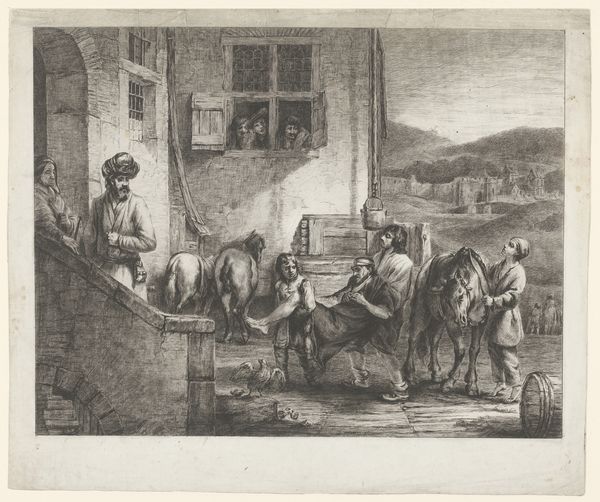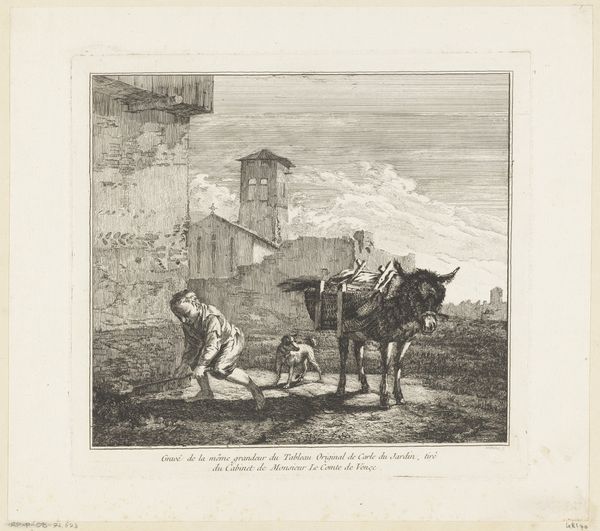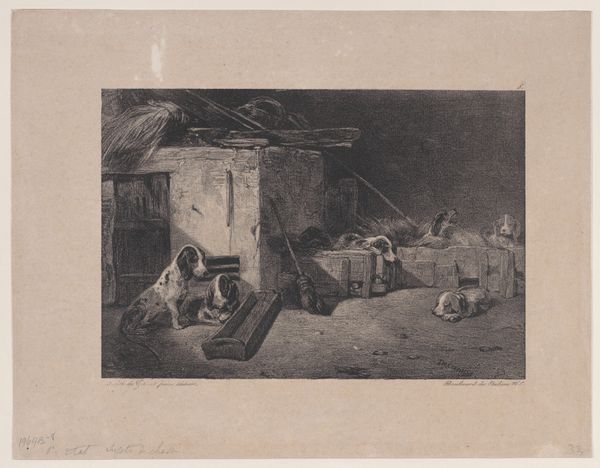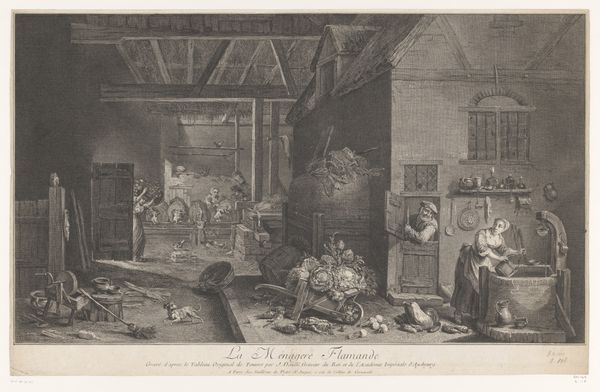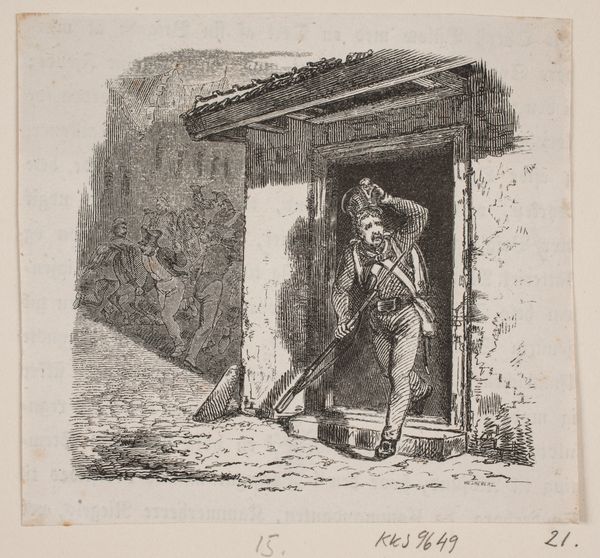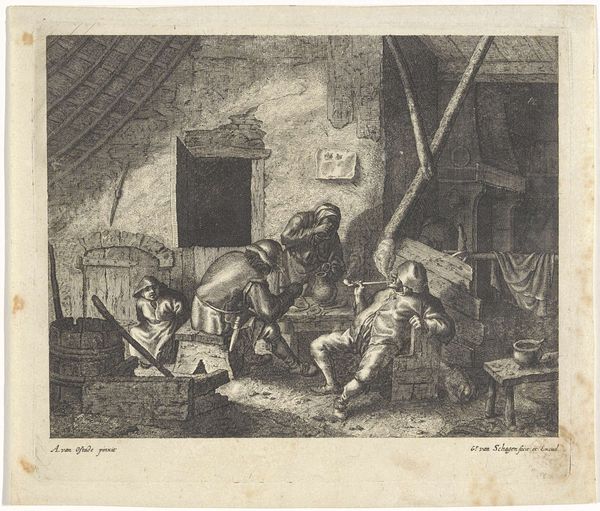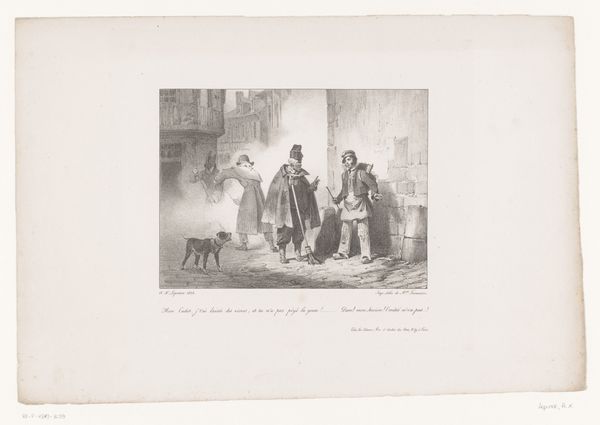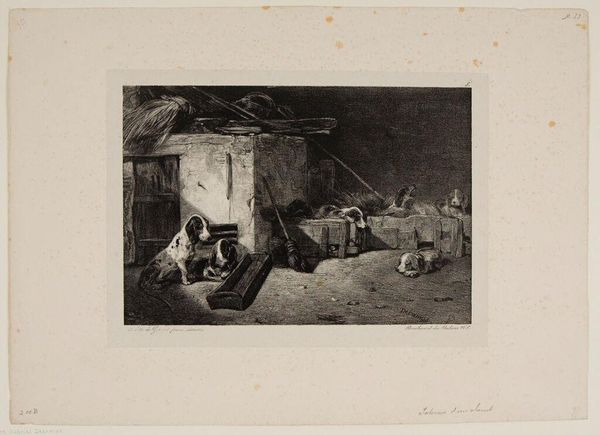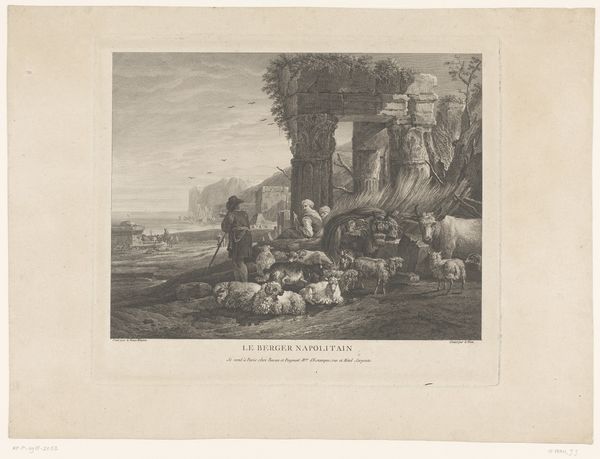
Vue de l'intérieur de la piece appartenant a la maison de Campagne, ou se faisant la préparation du Bain chaud dans la Ville de Pompeiia 1805
0:00
0:00
print, engraving
# print
#
classical-realism
#
ancient-mediterranean
#
cityscape
#
history-painting
#
engraving
Dimensions: 426 mm (height) x 573 mm (width) (plademaal)
Curator: Here we have "Vue de l'intérieur de la piece appartenant a la maison de Campagne, ou se faisant la préparation du Bain chaud dans la Ville de Pompeiia", an engraving created by Francesco Piranesi in 1805. It depicts a scene inside a rural house in Pompeii, seemingly preparing a hot bath. Editor: My first impression is one of starkness and contrast. The high contrast engraving makes it feel both ancient and immediate, like we are stepping into a preserved moment. The single figure seems almost desolate amidst these monumental ruins. Curator: It's interesting you mention desolation. Consider the historical context: Piranesi made this print in the early 19th century when Pompeii was undergoing renewed excavation. These images captured the public imagination, creating a visual record for a Europe fascinated by antiquity and the rediscovered everyday life of the Romans. Editor: Indeed, I see that everyday life echoed in the symbolic arrangements. Look at the placement of the urns and bath equipment; they are common classical symbols linked with rituals of cleansing, healing, and sometimes even sacrifice, given the volcanic fate of Pompeii. There's a duality presented: everyday tasks versus nature's volatile force. Curator: Exactly! And Piranesi's prints weren't just neutral documents. The Piranesi family heavily shaped the archaeological aesthetic and discourse around antiquity. Think about the composition itself, which is less scientific illustration and more dramatic re-creation to generate tourism and showcase ancient ingenuity and civilization. Editor: It strikes me that the somberness, in particular, contributes to the piece's longevity. I perceive an understanding that every daily routine in our lives will leave symbols or echoes in cultural memory and the archaeological landscape, a story etched deeply enough that it can still talk to the modern eye and still leave you touched by time. Curator: Your reading certainly underscores the power of images to both document and mythologize the past. By bringing socio-political aspects to the work through these iconic visual references, Piranesi does far more than render an historical interior—he shapes the historical narrative itself, embedding powerful symbolic traces. Editor: I completely agree, and it brings a depth that the original image seems to have left me seeking until now.
Comments
No comments
Be the first to comment and join the conversation on the ultimate creative platform.


